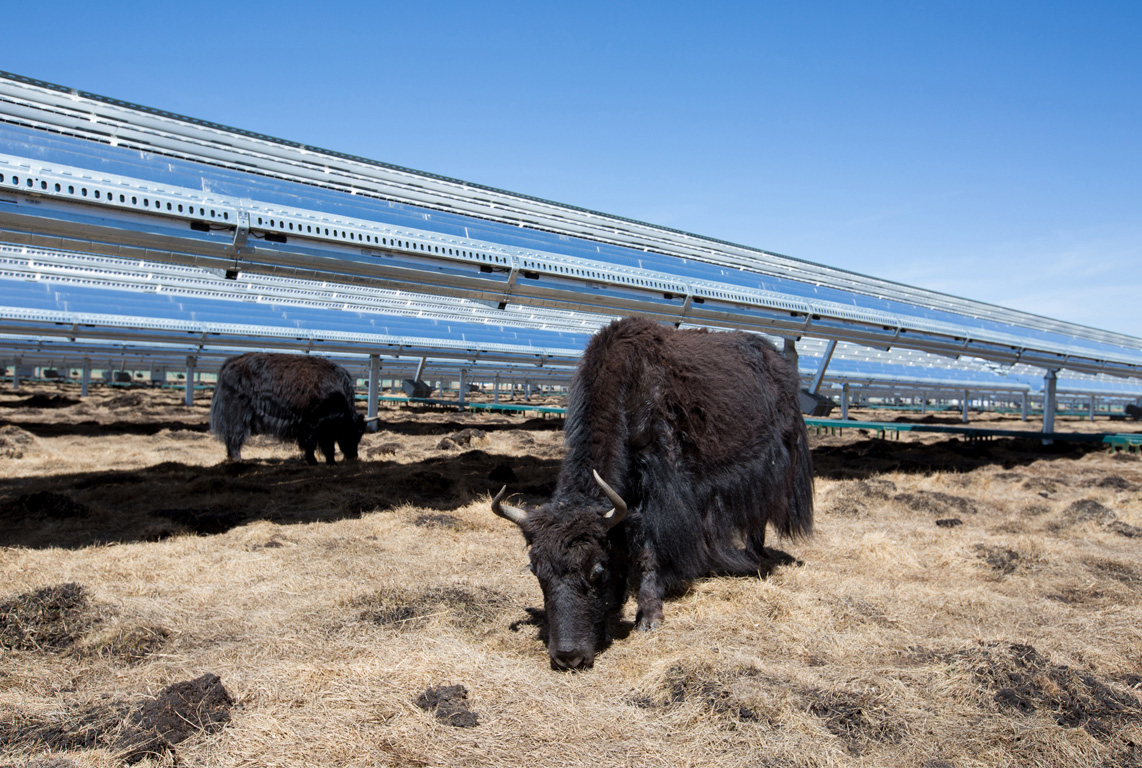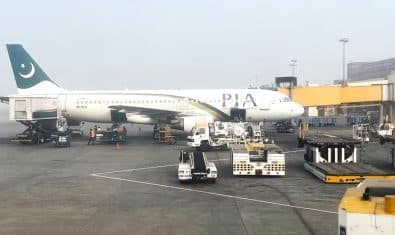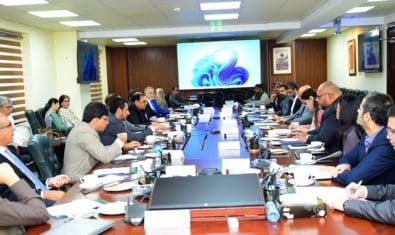Pakistan’s energy imports (in tonnes of oil equivalent) would have to double by 2025, as local gas production is projected to fall from about 3.7 billion cubic feet per day currently to about 1.8 billion cubic feet per day, says the Asian Development Bank (ADB).
The ADB Institute (ADBI) in its latest paper, “Green finance in Pakistan: barriers and solutions”, states that overall, Pakistan imports nearly a third of its energy supplies in the form of oil, coal, and recently LNG. This share of imports is expected to grow drastically as Pakistan’s own gas fields deplete.
OGRA projects local gas production to fall from about 3.7 billion cubic feet per day currently to about 1.8 billion cubic feet per day by 2025. Over the same period, it expects demand for gas to increase by over 1.5 billion cubic feet per day. To just cover this incremental 3.5 billion cubic feet per day gas shortfall, Pakistan’s energy imports (in tonnes of oil equivalent) would have to double by 2025.
The report states that over the last 5 years, the energy sector in Pakistan has gone through a massive phase of investment. Around 10 GW of new power generation capacities and 1.2 billion cubic feet per day of new LNG-importing infrastructure have been either commissioned or will be commissioned by 2018. These include 1 GW of wind and solar power projects. New initiatives such as distributed power and net metering have been launched but are at a premature stage.
Consequently, Pakistan is well positioned to fulfill its immediate energy priority of eliminating power and gas shortages, which had slowed down industrial and economic growth in the country.
However, Pakistan now needs to turn its attention to the medium-term challenges including improving energy security by reducing the share of imported fuels. Pakistan imports nearly a third of its energy. This share of imports would double by 2025, with the impending depletion of Pakistan’s gas fields, and if no shift is made, moving energy demand to alternate local fuels.
Further Pakistan needs improving the transmission and distribution networks of electricity – the existing infrastructure is degraded, overloaded, and requires urgent enhancements to keep pace with the growth in power generation capacities, especially renewables.
Further the country needs reducing the cost of energy – over three quarters of the country’s energy needs are met through natural gas (including imported LNG) and oil, which will be largely imported by 2025.
The country’s economy is exposed to international energy price shocks. Renewable energy can play an important role in improving the country’s energy security, in reducing the cost of energy, and in reducing the contribution of international energy market shocks to its trade and fiscal deficits, maintained in the report.
The country offers a protected environment to utility-scale renewable projects, enabling them to access financing (debt and equity) with the same ease as nonrenewable projects. Pakistan’s one-buyer, take-or-pay electricity procurement model protects power companies (renewable or nonrenewable) against commercial risks, certain macroeconomic risks, and technology obsolescence risks, making them financially viable and hence bankable. However, this protection and increased financial viability come at the cost of the electricity consumers and the government. The consumers face higher electricity costs and the government has to set aside ever growing budgets for power subsidies.
Whilst steps are being taken to share the gains of operational efficiencies with the end consumers, and to reduce the cost of electricity through competitive tariff bidding, certain challenges still remain. The long-term take-or-pay power purchase agreements overprotect power projects, especially towards their end-of-life phase when they are more likely to face technology obsolescence. In a competitive market, at such a stage projects would have been retired. Wind and solar power projects are particularly facing the fallout from this problem as their technology has undergone rapid evolution over this decade leading to a slowdown in new project approvals.
The government is promoting renewable energy and local fuel based power projects in a bid to reduce the impact of PKR devaluation on energy prices in Pakistan by reducing dependence on imported fuels. Additional steps can also be taken like offering PKR based returns on equity for power projects instead of USD based returns and pursuing policies to incentivize equipment and technology suppliers to increase the localization of their maintenance services.
Hydropower in Pakistan is able to attract limited interest from the private sector, due to the long gestation periods of these projects and the availability of more attractive alternative renewable energy investment options like wind and solar power. Combined water storage and power generation hydro projects face the added challenge of water mispricing.
Loading the entire investment costs of these projects on the power tariff makes the tariff less competitive than other sources of electricity and also misallocates the costs of water storage from the agricultural sector (the largest consumer of water) to the domestic, commercial, and industrial sectors (the largest consumers of electricity).
The regulatory environment in Pakistan for renewable distributed energy projects and off-grid renewable projects is not as supportive and protective as it is for utility-scale on-grid projects. Smart metering and net metering are still being commercially launched by the distribution companies. Without net metering or the ability to sell surplus power back to the grid, owners of such projects are limited to driving their economic viability only from the savings earned from substituting their consumption of expensive grid energy with renewable energy. Payback periods of such investments therefore tend to be long. Furthermore, commercial lenders in Pakistan consider loans for procuring and installing distributed energy solutions just as risky as unsecured personal loans charging interest rates in the range of 24%–28%.
Recently, the State Bank of Pakistan launched a subsidized financing scheme to offer financing to renewable projects at a subsidized interest rate of 6% per annum. This facility ends up being extended more to commercial entities who have the capacity to offer alternate collateral (land, other plants, and equipment) than to individuals who have limited collateral options.
One solution could be for the SBP to allow the financing to be extended to distributed energy equipment and services suppliers rather than the buyers. Such companies will be able to offer their inventory and receivables as collateral to secure the facility and in return offer their customers products on affordable lease terms.
Another option to mitigate the risk of loan default is to enable at-source deduction from salary accounts of buyers. Finally the authors recommend that in addition to the conventional subsidized financing, SBP should also introduce an Islamic version of this scheme to encourage the financing and adoption of distributed energy solutions among Islamic investors. Islamic products such as Ijara and Murabaha at subsidized terms should be introduced to promote the adoption of renewable energy.
The report further states that one of the main financial challenges with water and power projects like the Diamer-Bhasha project is that whilst electricity is reasonably priced in Pakistan, water is underpriced. Water and sewerage utilities charge only a nominal amount for these services, which does not vary with actual consumption. As a result, combined water and power projects are not able to generate enough revenue on their own to achieve financial viability and are almost entirely constructed by the government with funding coming from its development budgets or lending to the government (not to the project) from commercial banks/international lenders and donors.
Trying to recover the investment and operating costs of such projects entirely through the power tariff makes the power tariff unfeasible compared to other sources of electricity. Moreover, it misallocates the costs of the project to the wrong consumer – agriculture is the largest consumer of water whilst residential, commercial, and industrial sectors are the largest consumers of electricity. Conversely, increasing the price of water is a politically unpopular policy. Also, the implementation of better pricing would require a heavy financial investment in infrastructure to measure and control the use of water across the country, the costs of which might be prohibitive for a government with limited means.
The report states that Transmission and Distribution Capacity (T&D) sector in Pakistan faces several concurrent challenges which include high T&D losses. The national average of electricity transmission and distribution losses stands at 16–18% with district-wise grid losses ranging widely from less than 10% to higher than 30%.
These losses include both technical losses and power theft.
Overloaded distribution infrastructure: Developments in the T&D sector have not kept pace with the electricity demand and with the additions of new power plants. As a result, a sizable share of power transformers, 11 kV feeders, and distribution transformers are overloaded or operating at capacity.
Overloading increases the likelihood of technical faults and grid failures. 3. Addition of renewable power: Since electricity generated from renewable energy like solar and wind varies with the time of the day and season, T&D operators need to rethink grid management to adapt to renewable energy related grid stability challenges. Additionally, as distributed power generation such as home rooftop solar solutions takes off, the grid needs to be ready for smart metering.
The T&D sector in Pakistan lags behind other energy sectors in attracting private investment as reforms to allow and encourage private sector participation have been slow in the making.
The government is currently ambivalent about whether or not it will proceed with the privatization of distribution companies as the results of privatization of K-Electric, the first utility to be privatized in the country, are nonconclusive. K-Electric has seen a financial turnaround, from being a loss-making entity to becoming a profitable company – the new management managed to improve operational efficiencies and payment recoveries. However, it is now coming under increased criticism and scrutiny for not investing enough in its T&D infrastructure and for failing to eliminate power shortages on its network.





















